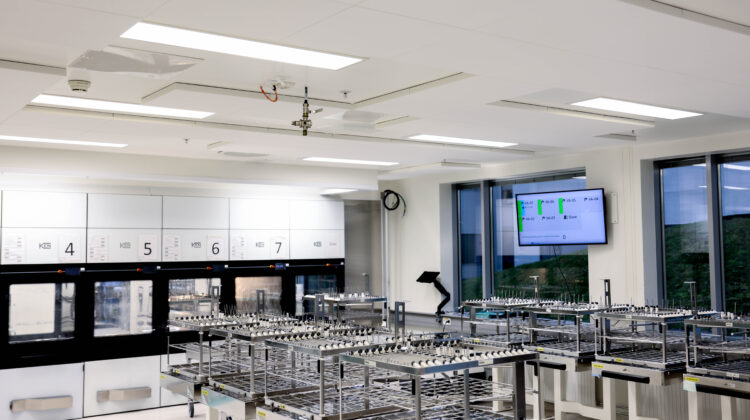
Imagine working in an environment where the constant clatter of metal trolleys, the hum of industrial washing machines, and sound reflections from hard surfaces create an unrelenting cacophony. This was the daily reality for the dedicated staff at the sterile unit of Akershus University Hospital (Ahus). One of Norway’s largest hospitals is located just outside Oslo.
The Sterile Unit
At the sterile unit in Ahus, every piece of surgical equipment is meticulously cleaned, packed, and prepared for the following procedure. The staff’s ability to concentrate and communicate effectively is vital. Not only for their own well-being but also for the safety of the patients who depend on their precision and care.
Although Ahus is a relatively modern hospital, having opened in 2006, the acoustics in the sterile unit left much to be desired. The unit is divided into clean and unclean zones. In the unclean zone, used surgical equipment is received and initially cleaned. It then passes through washing machines before being transferred to the clean side. Here it is prepared for reuse. The combination of hard surfaces – gypsum, concrete, and linoleum – and the noise from machines and trolleys created a demanding work environment. High noise levels drained staff energy, making it difficult to focus and communicate effectively.
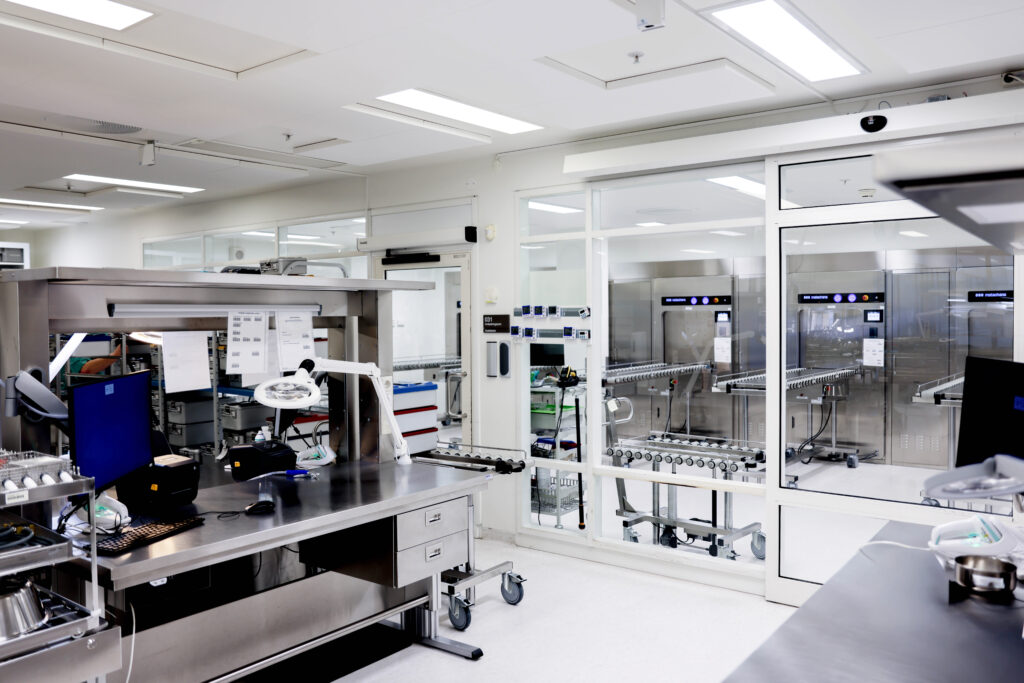
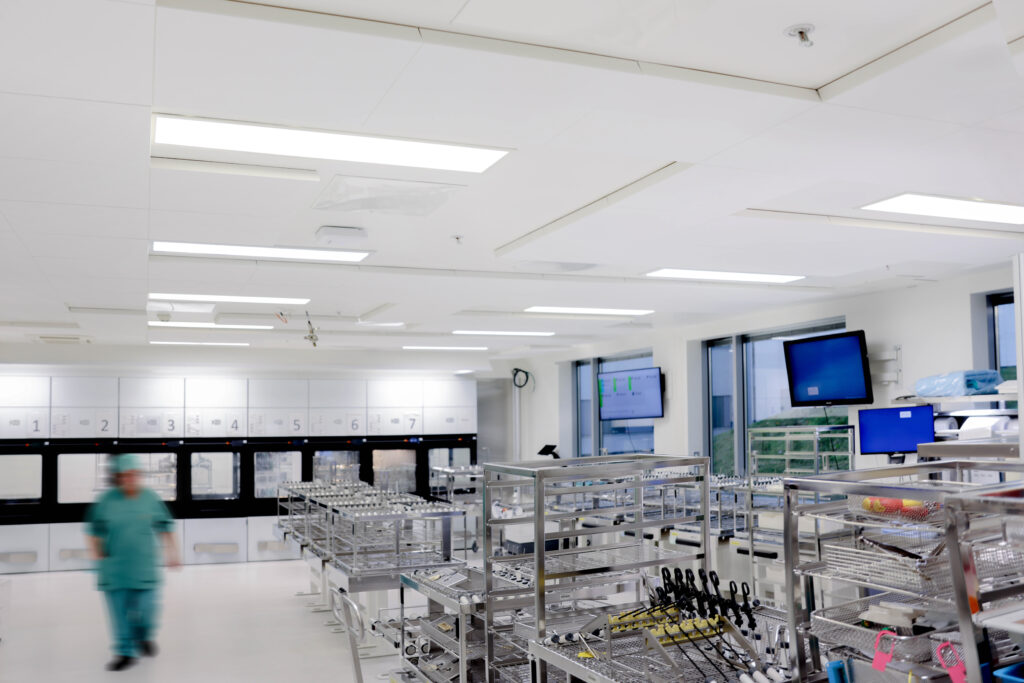
The combination of hard surfaces and the noise from machines and trolleys in the sterile unit created a demanding work environment. The staff’s ability to concentrate and communicate effectively is vital.
Challenges in a demanding environment
Operating around the clock, the sterile unit at Ahus handles a consistently high workload. The staff play a critical role in ensuring that all surgical equipment is ready for use. However, the persistent noise from machinery and the metallic clatter of trolleys made it challenging to concentrate and perform tasks efficiently. Communication was also hindered, often requiring staff to raise their voices to be heard, which led to frequent misunderstandings.
Measures to improve the working environment
Recognising the need for improvement, a project was launched to address the acoustic challenges in the sterile unit. In the initial phase, sound measurements and staff surveys were conducted to assess the physical working environment. To meet strict hygiene and cleaning requirements, a new type of acoustic ceiling – Ecophon Hygiene Performance™ B – was selected. These panels are installed directly onto the existing slab and are designed to withstand thorough washing and disinfection, making them ideal for sterile environments.
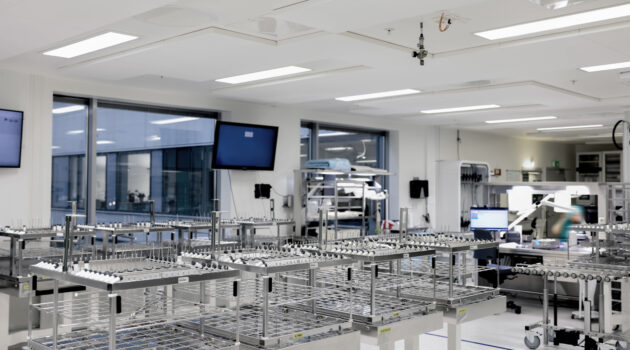
Results before and after implementation
Before the acoustic improvements, staff reported significant noise from machines, trolleys, and containers. This negatively impacted their ability to concentrate and perform tasks effectively. Many described the physical working environment as challenging, particularly due to the noise.
Following the installation of the acoustic panels, most respondents reported a noticeable improvement in the working environment, with reduced noise levels and better conditions for concentration and communication.
Key findings:
Average sound pressure level was reduced by 5 dB
Reverberation time was reduced from 1.04 seconds to 0.43 seconds
Sound peaks was decreased by 5 dB
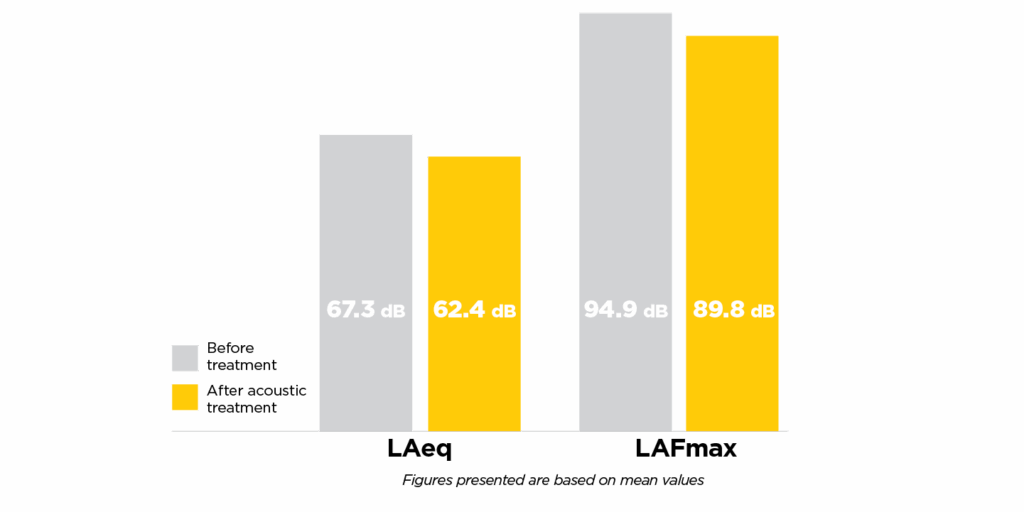
Following the installation of acoustic panels, the average sound pressure level was reduced by 5 dB
(LAeq: the average sound energy, LAFmax: the maximum A-weighted sound level).
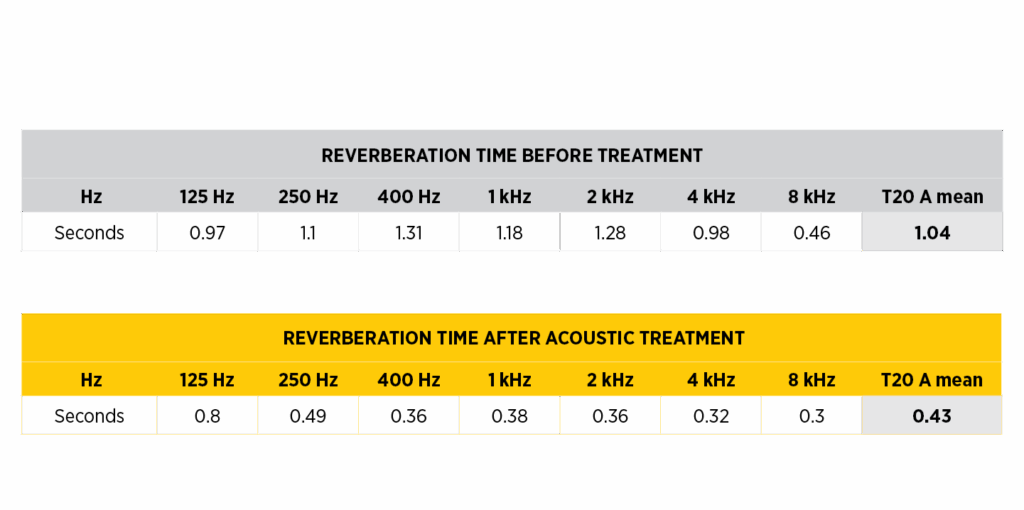
The reverberation time was reduced from 1.04 seconds to 0.43 seconds. This indicates a significant difference in how the sound environment is perceived.
Sound pressure levels (SPL) were measured both near the washing machines and at the far end of the room, before and after treatment:
· Before treatment: the difference between zones was 1.7 dB
· After treatment: the difference increased to 5.3 dB
This indicates that the acoustic treatment significantly reduced sound propagation across the room. In other words, noise from the machines no longer travels as far, meaning staff working farther away are now less exposed to it.
Collaboration and communication
Before the acoustic improvements, noise from machines and metallic sounds severely impacted concentration and efficiency. After the measures were implemented, many staff members noticed a marked improvement – particularly in the packing room – although some noise issues remained.
The improvements also had a positive effect on collaboration and communication. Previously, noise led to frequent misunderstandings and made it difficult to hear one another without shouting. After the changes, staff reported fewer misunderstandings and found it easier to communicate at normal speaking volumes.
Moreover, the changes had a significant impact on staff wellbeing. Before the improvements, many felt exhausted after their shifts and lacked energy for leisure activities. Post-implementation, they reported feeling less fatigued and more energised in their personal lives.
Conclusion
The acoustic measures implemented at the sterile unit at Ahus have had a profoundly positive impact on the working environment. Reduced noise levels have improved both concentration and communication, contributing to a more efficient and pleasant workplace. There is still room for further enhancements – such as additional noise reduction and enhanced lighting. But the results so far clearly demonstrate that these measures have significantly improved staff wellbeing and productivity.
If you are interested in the sound environment in operating rooms, check out the following:

